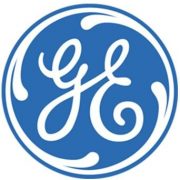As a potentially profitable opportunity presents itself, John will send you an alert with specific trade information as to what should be bought, when to buy it, and at what price. This is your chance to ?look over? John Thomas? shoulder as he gives you unparalleled insight on major world financial trends BEFORE they happen.
Further Update to: Trade Alert -(GE)
Buy the General Electric Co. April, 2014 $24-$25 bull call spread at $0.82 or best
Opening Trade
3-5-2014
expiration date: April 18, 2014
Portfolio weighting: 10%
Number of Contracts = 122 contracts
If the prospect of WWIII can?t knock this market down, what will it take? A giant asteroid that destroys the earth?
Even the most hardened and seasoned traders, like me and Mad Day Trader Jim Parker, were stunned by how fast the markets bounced back from Monday?s war scares in the Ukraine. Of course, everything I said in my Monday letter came true.
It would have been nice if the recovery stretched out over a longer period of time, giving me better entry points for my Trade Alerts. But that was not to be. Too many people are still frantically trying to get in this market. It seems that the new trading strategy is that if something hasn?t gone down for three days, you buy it.
Bizarre as it may seem, the weather is emerging as the big driver this year. Even the Federal Reserve is now saying that the weather was a big drag on the economy this year. That means that every negative data point for the next few months has a great excuse to be ignored.
It also means the growth that was lost in Q1 will get added back in during Q2 as the economy plays catch up. This has the potential to create a growth surge that generates a spike up in all risk assets. Fasten your seat belt!
So I am going to take advantage of the pre Friday nonfarm payroll doldrums to start loading the boat and scaling up. That?s why I picked up General Electric (GE) and Delta Airlines (DAL) today, classic cyclical names. Also on the short list are EBAY (EBAY), Gilead Sciences (GILD) for another visit to the trough, Goldman Sachs Group (GS), and QUALCOMM (QCOM).
Today?s new trades graciously turned immediately profitable, taking my performance up to yet another all time high of 134.41% since inception, and a 2014 year to date of 11.91%. That takes my average annualized return up to a stratospheric 41.4%. Incredibly, after last year?s torrid 68% profit, my performance is getting even better. It appears that, like a fine Napa Valley wine, I improve with age?
Yes, I know you have been told by the talking heads on TV that stocks are expensive, and that a crash is imminent. Personally, I think equities are cheap, and that we are on our way to a Dow Average of 100,000-200,000 by 2030. I will keep that view as long as the stocks that I am buying pay higher dividends than the ten year Treasury yield (TLT), now at 2.69%.
To support my view take a look at the chart below produced by my friends at Business Insider. It shows that the share of technology names, the lead sector for the entire market, trading at more than five times sales is below 40%, a fraction of the 2000 peak.
I think we have to match, or exceed, this peak before the party is over and the lights get turned out.
The best execution can be had by placing your bid for the entire spread in the middle market and waiting for the trade to come to you. The middle market is the halfway point between the bid and the offered prices that you see on your screen with your online broker.
The difference between the bid and the offer on these deep in-the-money spread trades can be enormous. Don?t execute the legs individually or you will end up losing much of your profit. Keep in mind that these are ballpark prices only. Spread pricing can be very volatile especially on expiration months farther out.
Here are the specific trades you need to execute this position:
Buy 122 April, 2014 (GE) $24 calls at??.????$1.96
Sell short 122 April, 2014 (GE) $25 calls at??..?..$1.14
Net Cost:????????.???????..??....$0.82
Profit at expiration: $1.00 - $0.82 = $0.18
(122 X 100 X $0.18) = $2,196 or 2.20% profit for the notional $100,000 portfolio.






